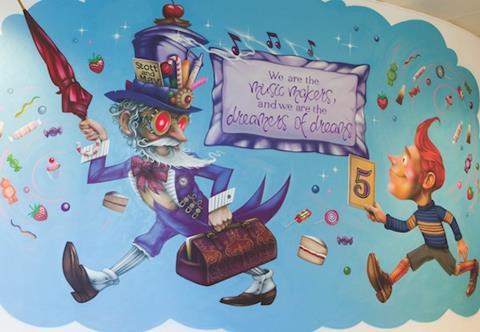
Need to know:
- Changes in society and legislation mean the traditional workforce is changing.
- Flexible working and health and wellbeing benefits will increase in prominence.
- Benefits schemes can help by giving employees greater choice.
With changing demographics, the abolition of the default retirement age and the rise of flexible working, the world of work is undergoing a period of upheaval. Both the composition of the workforce and how work itself is undertaken are evolving, presenting both opportunities and challenges for employers when it comes to motivating and engaging tomorrow’s employees.
Multiple generations
Employers need to give particular thought to how they handle the issue of multiple generations in the workforce, says Martha How, reward partner at Aon Employee Benefits. “At heart, most employees are looking for the same things: fair reward for effort and performance, a good environment where they are well trained and managed, and to be able to see a future for themselves in the organisation,” she explains. “That said, there are some ‘must dos’ in managing a multi-generational and diverse workforce, around offering flexibility and choice over as much of the reward deal as possible, and communicating with employees regularly.”
From a career development perspective, employers need to think about what will excite, surprise or develop a feeling of trust from employees, and again this differs by generation, says Dr Sue Paterson, co-author of The Fear-Free Organization: Vital Insights from Neuroscience to Transform your Business Culture. “A graduate or young recruit needs to be excited by the job he or she has chosen, so should not be asked to do only the mundane jobs,” she says. “A working [parent] needs flexibility to do [their] job and look after [their] family well, while a late career worker needs to avoid getting tired and stale.”
Differing management approaches
Employers may need to adapt how they manage the various generations, says Dilys Robinson, principal research fellow at the Institute for Employment Studies. “Baby boomers, for example, tend to be more loyal to their employer, work hard and have a longer-term focus, whereas more recent generations (Y and Z) have grown up with fast-moving technology and instant communication, so their focus tends to be shorter term,” she explains. “This has implications for feedback; baby boomers like to know they’re on track but don’t need frequent communication, while much younger people like much more frequent reassurances.”
The concept of team coaching can be useful in helping to make different generations feel valued, as well as improving and sharing knowledge, says Angela Jowitt, an executive coach at Ashridge Executive Education, Hult International Business School. “More experienced team members have the opportunity to mentor, to share their experience and knowledge, which often leads to them feeling valued,” she explains. “It’s also likely to appeal to the younger generation because it does not rely on a hierarchy for the process to work.”
Flexible working
Offering flexibility around working hours will undoubtedly form part of any employer’s attempts to juggle multiple generations. Bill Alexander, chief executive officer at Red Letter Days for Business, says: “Trends show employees want more flexibility from their working day and motivation strategies in the future will reflect this concept. Self-governance is very motivating to an individual, no matter what level they’re at or what role they play within their organisation.”
This issue is only likely to become more important for tomorrow’s workers, as more employees struggle to balance looking after both children and older relatives. Ben Black, director of My Family Care, says: “A multi-generational and modern workforce will need a culture that understands its particular needs and desires. This will need to be backed up by a benefits strategy that helps put practical support in place to make sure work and family really can work.”
Back-up care schemes, help with finding childcare and eldercare, and employee assistance programmes can help here.
Healthy workforce
Health and wellness is also starting to feature high on the agenda for both employers and staff, and this will only become more important in the future. However, this needs to go beyond facilitating access to gyms and offering healthy food in the canteen, explains Ben Moss, managing director at Robertson Cooper. “We talk about six essentials that need to be in place for employees and organisational cultures to really thrive, including working relationships, control, well-managed change and having the right resources and communications in place to do the job well,” he says. “These are key characteristics that can block or enable wellbeing, engagement and motivation.”
Rewarding each generation
Underpinning all these wider initiatives should be an effective employee benefits package that allows employees to choose what matters to them. Joanne Abate, assistant vice-president, global benefits and insurance programs at Unum, says: “Employers must start by promoting an ageless culture that treats and rewards each age group equally. But it is also important to evaluate the needs and motivations of workers at different life stages. For example, support around ill health becomes increasingly important as we get older, while younger workers might be more interested in softer benefits such as gym membership and flexible working.”
Some employers are already offering staff a greater degree of choice, on the understanding that they cannot have everything, says Deborah Rees, director of consulting at Innecto. “A few years ago, proper [flexible benefits] was the prerogative of larger organisations that had a big workforce but we’re now seeing some new players that are able to offer micro- and mini-businesses a really impressive flex package,” she says.
There is also a particular focus from generation Y on technology, but this has to be of a good enough standard to enable employees to work or manage their personal lives effectively while on the move.
Yet, despite all the talk of tailoring a strategy to suit different ages or stages of life, there are some basics that will always remain essential in motivating a workforce. Gayle Wiley, chief people officer at telecommunications firm Lifesize, says: “Recognition is a key motivator for employees. This may be as simple as praising staff in team meetings or a handshake and ‘thank you’ from a leader. Ultimately, employees who feel valued and happy within their team will almost certainly work harder. The little things can make the difference.”

Stott and May provides motivation with an engaging workplace
Recruitment business Stott and May has gone out of its way to ensure the office is not just seen as a place of work as it seeks to appeal to a modern workforce.
The firm’s London office is decorated in a Charlie and the Chocolate Factory theme, while its New York equivalent is themed around Alice in Wonderland. There is also the boardroom, now known as the ‘inventing room’, where people can write ideas on the walls, in an attempt to stimulate creativity.
Stephen Stott, chief executive officer, says: “Everyone is given the opportunity to contribute, even to the aesthetics in the office, so it feels like an extension of their life outside work, and that’s helped to ensure there’s a real community.”
The business has also looked to bring the staff of all generations together with benefits that include free breakfasts for all employees, a table-tennis table that staff of all ages regularly use, and other team-based challenges such as cycling or in-house competitions.

Viewpoint: Staff motivation needs to be carefully planned to suit different generations
A major challenge that managers face in contemporary workplaces is motivating employees. However, the inducements that motivate are unique for every individual. As employers are instinctively concerned about meeting their business objectives, it is worthwhile for them to strike meaningful relationships with their employees and together identify the things that help their employees achieve their personal goals and aspirations, as well as meet business objectives. Some of the things that motivate employees include factors such as responsible leadership, career advancement, recognition, and the nature of the job.
Being attentive to the issue of employee motivation is important for a variety of business reasons. Having responsible leaders can serve as a motivational tool by communicating organisational norms and values. If leaders maintain good relations with their staff and treat them fairly, this may improve performance levels and loyalty. Also, most employees today want to be recognised for their work and are constantly looking for ways to improve their skill sets and aptitudes. When employees receive such developmental opportunities, in line with the norm of reciprocity they not only become more committed to the organisation but are also more likely to stay.
Several studies on generational differences have suggested that the needs of younger workers are different from those of older workers. As younger people are less likely to have outside obligations, they are primarily motivated by personal growth and new learning opportunities. On the other hand, workers approaching the end of their careers may not be as interested in developmental opportunities as in the opportunity to flexibly arrange work and non-work obligations.
Finally, motivational incentives need to be carefully designed to fit the requirements of different generational groups. While this is an approach employers might be unwilling to embrace, when it comes to incentive schemes one size rarely fits all.
Dr Shainaz Firfiray is an assistant professor of organisation and human resource management at Warwick Business School at the University of Warwick




































